
How to Create a Diversified Portfolio with Different Risk Profiles
You keep hearing about diversification and why it’s so important, but you also want to know how to construct your portfolio so it’s actually diversified. First of all, the asset allocation depends on your risk profile, goals, investment time horizon and ability to withstand risk. This is different for everybody and is generally broken down into conservative, balanced, growth and high growth risk profiles, each having different asset allocations. Let’s recap on growth and defensive assets.
Growth assets
Growth assets tend to have more volatile returns over the shorter term – that means they fluctuate and go up and down more, but they do have the potential for higher returns over the longer term.
Defensive assets
Defensive assets are considered lower risk and are less volatile, they don’t move up and down as much but generally don’t have the same potential for higher returns over the longer term.
The table below outlines the split between growth and defensive assets for different risk profiles.
A well diversified portfolio not only includes growth and defensive assets, but it includes different asset classes within those. For example, if you have exposure to US equities and US bonds you have growth and defensive assets, however it is not diversified from an asset class perspective or a geographical location perspective.
However, if you had an allocation to equities, infrastructure and property across different geographical locations you can see this is far more diversified. The same applies to defensive assets.
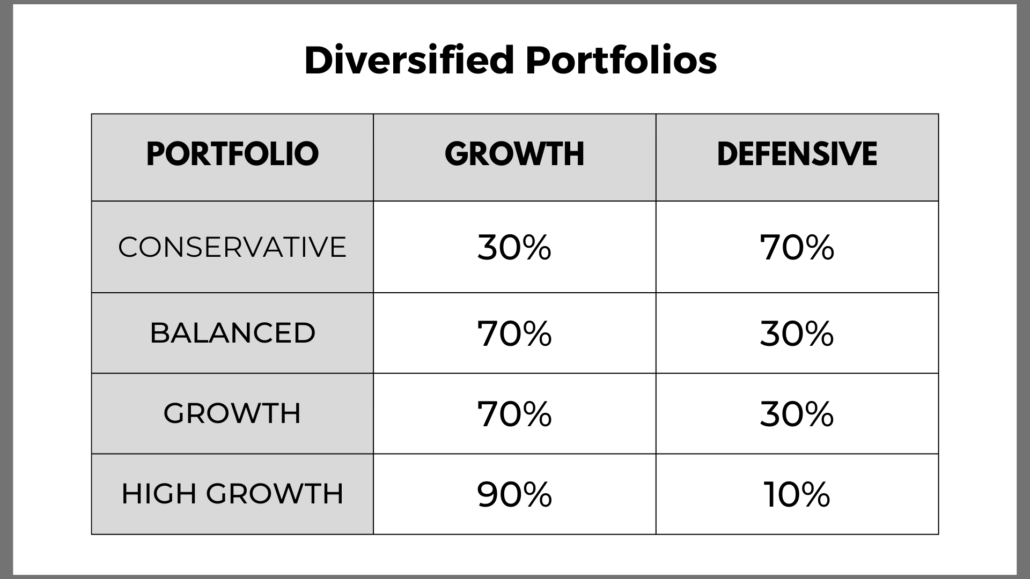
The pie graphs below illustrate the underlying asset classes for conservative, balanced, growth and high growth portfolios.
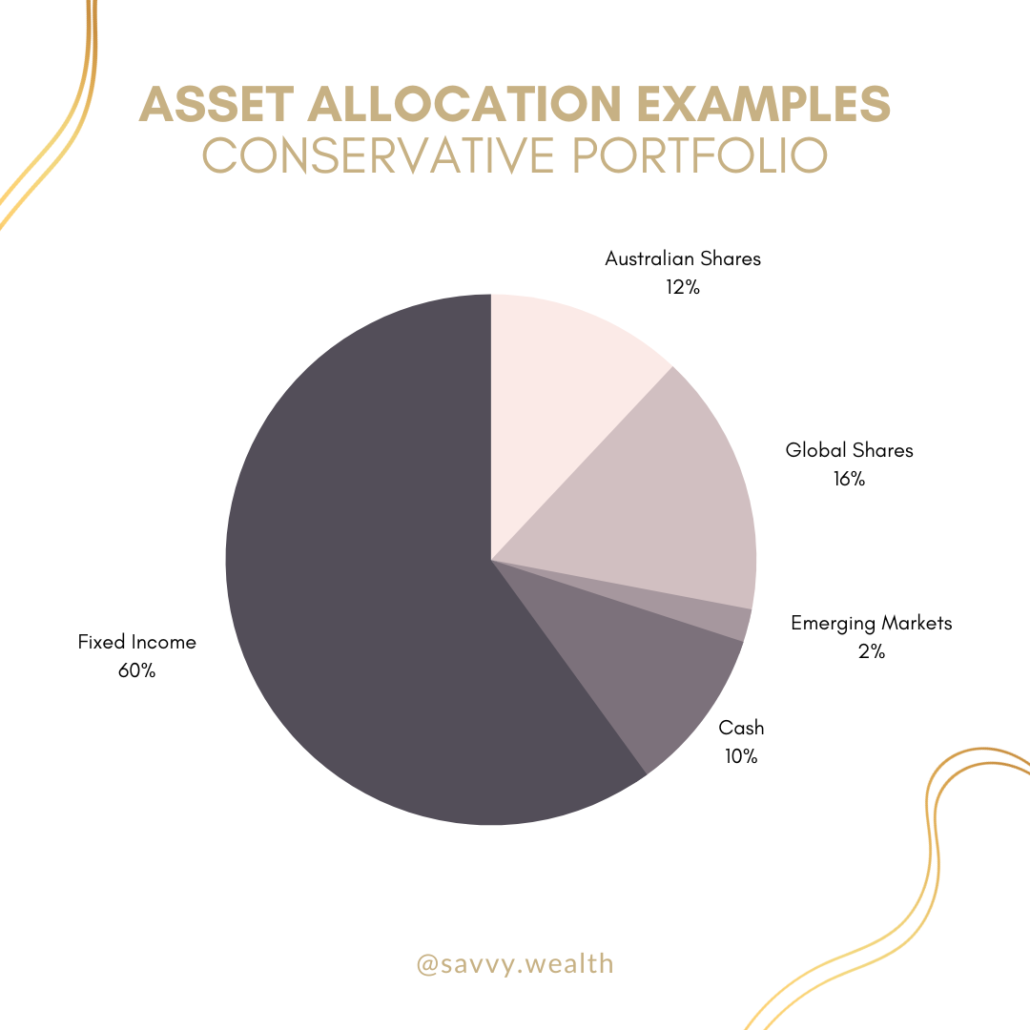
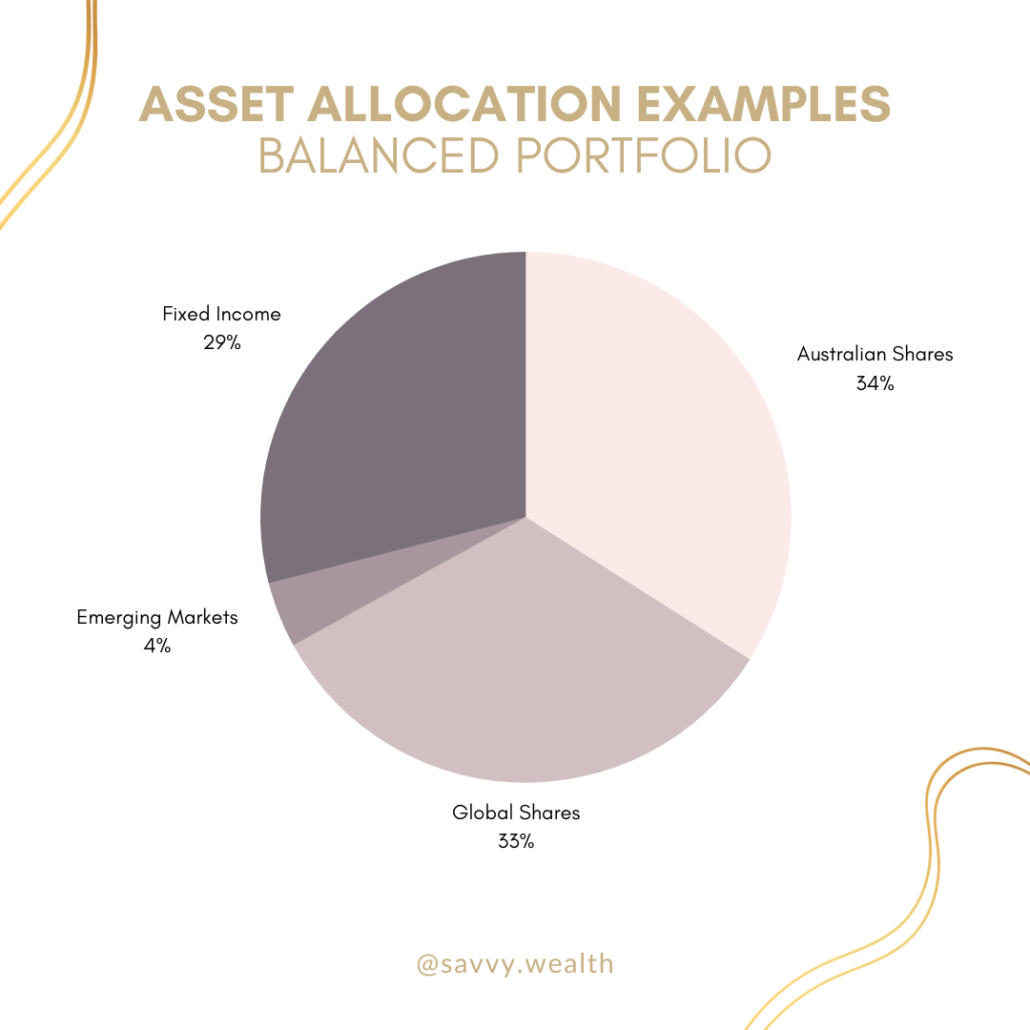
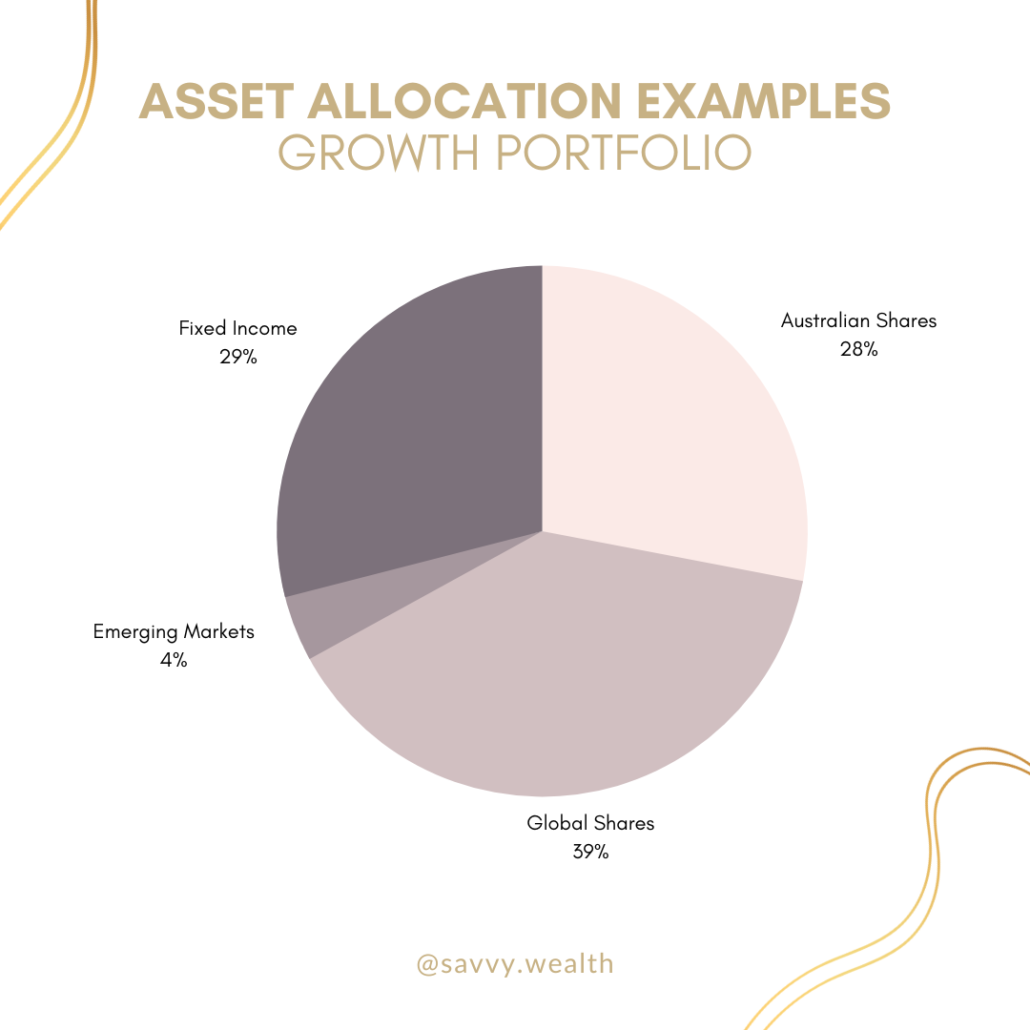
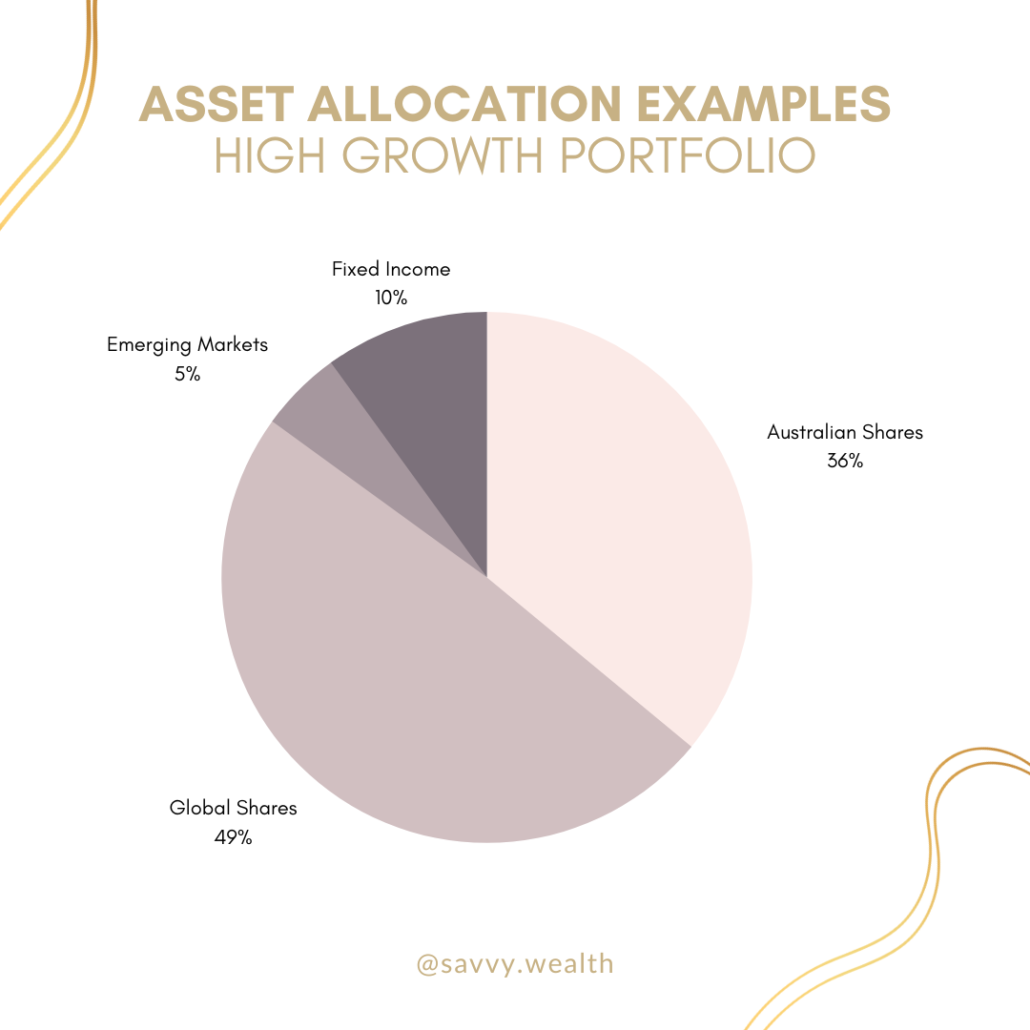
This gives you an idea of what to have in a diversified portfolio based on different risk profiles, but the next question is often how do you do this?
One way to do this is through micro-investing platforms that have pre-made portfolios which automatically provide you with a diversified portfolio (even with small contributions), they also re-balance your portfolio so it stays in line with the risk profile.
If you prefer to create your own portfolio through direct shares and/or exchange traded funds (ETF’s) you will need to ensure it’s diversified yourself.
One way to do this is to dollar cost average into ETF’s that fit into your risk profile and build your diversified portfolio out that way.
Inside of Financial Freedom Fundamentals I teach my clients how to create passive income and increase their net worth. They not only have automated systems that work for them, they create overflow and have so much joy and happiness in their lives. All on the way to creating so much choice and freedom in their lives with abundance in all areas.
This is general information and for educational purposes only.



